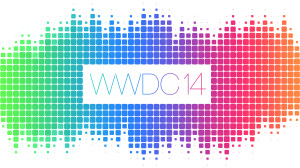 In writing up on Apple’s WWDC I should say up front that I am not a developer. The “D” after all in WWDC stands for Developer! When you start from that context you adjust your expectations accordingly. The focus rightly so is on iOS and OS X – software not hardware.
In writing up on Apple’s WWDC I should say up front that I am not a developer. The “D” after all in WWDC stands for Developer! When you start from that context you adjust your expectations accordingly. The focus rightly so is on iOS and OS X – software not hardware.
The opening keynote is available for viewing here: http://www.apple.com/apple-events/june-2014/
iOS 8.0 (HealthKit & HomeKit)
The timing of WWDC is always strategically aligned to June to allow for developers to spend the summer months applying the newly released code/APIs into both existing and new apps. The iOS 8 launch for around the September period is also supported by this cycle, whereby developers have the June-September period to prepare for the next generation of iOS capabilities. The ready availability of iOS 8 capable apps is part of its fast rates of user adoption.
The introduction of HomeKit and HealthKit as new core capabilities built into iOS expand the reach of Apple and their iOS devices into niche consumer market segments. Personally, I can see direct benefits for this – no doubt Fitbit will take advantage of HealthKit to deliver an integrated experience. The trade-off, as seen in the moves by Nike and other companies is to shift from manufacturing exclusive hardware to leveraging the Apple hardware. Until the launch of an iWatch device, Fitbit devices still play a role in collecting the health data and offering a validation of iPhone collected data.
Similarly, use of HomeKit will help to increase the use of iOS devices in managing household functions such as lighting and control of Home Entertainment systems. Existing systems utilizing AirPlay will undoubtedly be upgraded to leverage these new software features.
OSX Yosemite
As the next release of the Mac operating system, we are finally starting to see true integration with iOS – allowing Apple apps (initially) to switch seamlessly between devices. The most radical and impressive implementation of this was the demonstration of a voice call being transferred from iPhone to MacBook! The key to this level of integration and seamless transfer between calls, messages and FaceTime video calls is use of the same WiFi network between devices. It is not completely clear what this will mean for telecommunications providers and whether the one phone call transaction is purely a VOIP delivery/conversion of traditional mobile phone calls using a circuit network.
Other standout features in Yosemite look to be the UI redesign complete with font standardization across all Apple devices, and the simplification of Spotlight to become more operational like iOS. Indeed, Yosemite would appear to be the iOS-ification of OSX, paving the way for the eventual release of a touchscreen version of MacBooks and iMacs. That day is now one step closer and potentially a lot sooner than we think. Naturally the form factor of an iMac makes it highly conducive to going touchscreen and foregoing the need for a pointing device & keyboard.
But I digress… Or do I? Ultimately it is the software that enables greater use and application of hardware. Hardware without software is kinda useless. Thus, WWDC is all about Apple releasing new software to its developer base such that they can invent and devise new ways for the Apple customer base to utilize both new and existing devices. Shareholders who push for hardware announcements and get disappointed when WWDC does not deliver on this are missing the point.
WWDC and all the software announcements simply prepare us for the later hardware/device/new products that Apple will launch – be it an iWatch, or any other device. That Apple releases to market millions of these new devices within the space of months after WWDC also suggests that Apple has WWDC all worked out earlier in the year (March?) to allow core development to take place in time for launch later in the year. This has after all been Apple’s operating rhythm for the last 5 years at least!

You must be logged in to post a comment.